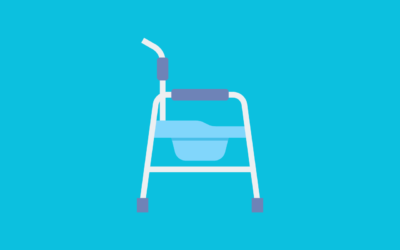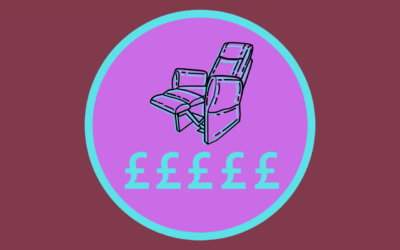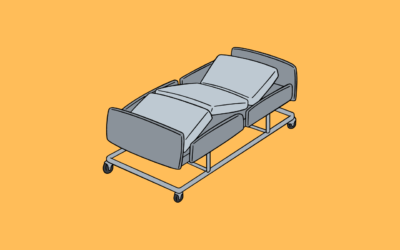Key Takeaways For Assistive Clocks and Alarms
Assistive Clocks Variety: Explore a range of assistive clocks, including those for dementia, vibrating and flashing light alarms, smart alarms, and wearable alarms for the deaf or hard of hearing.
Choosing the Right Alarm: Consider your preferences when selecting an assistive alarm clock. Options include vibrating alarms under pillows, smart alarms alerting devices, and flashing lights. Pay attention to size, mounting options, and customization features.
Assistive Technology Impact: Adapted clocks serve as assistive technology, aiding those with limited mobility. Various forms, such as large-screen displays, flashing lights, and vibrating notifications, offer functional independence for individuals with visual, auditory, or mobility challenges.
Top Assistive Clocks and Alarms
We have created an Assistive Clocks and Alarms Buying Guide that explains everything you need to know. Check it out below.
What Can Deaf People Use For Alarm Clocks?
Some of the various gadgets designed to help people who are deaf or hard of hearing get out of bed in the morning include vibrating and flashing light alarms. You can use a vibrating alarm on the mattress or the pillow to jolt you up in the morning. These alarm clocks may be mounted on a wall or nightstand as a morning wake-up call through a flashing light. Because they don’t rely on sound, both of these technologies may be used by persons who are deaf or hard of hearing as an alternative to regular audible alarms.
In addition to traditional alarm clocks, people who are deaf or hard of hearing can access smart alarms programmed to alert a smartphone or other device and wearable alarms that can utilise vibration or flashing lights to wake the person up. Shops specialising in assistive technology, both online and offline, sell alarms built for people who are hard of hearing. IChoosea warning you won’t miss and put it in a place where you won’t be able to ignore it.
What Is The Best Assistive Alarm Clock?
Your tastes and demands will determine which deaf alarm clock suits you. Audible alarms are uncommon, while warnings that employ vibration or flashing lights to alert the visually impaired are ubiquitous. To use a vibrating alarm, one may place it beneath one’s mattress or pillow and be roused by the tremors. Blaring alarm clocks can be put on nightstands or the wall and used daily.
In addition to traditional alarm clocks, people who are deaf or hard of hearing can access smart alarms programmed to alert a smartphone or other device and wearable alarms that can utilise vibration or flashing lights to wake the person up. In your search for a deaf alarm clock, you should consider the device’s physical dimensions and mounting options, the power of its vibration and illumination characteristics (such as a snooze button or customisable intensity).
How Do You Wake Up A Deaf Person Without Scaring Them?
Methods of gently waking people who are deaf or hard of hearing come in a few varieties:
- A vibrating alarm placed under your pillow or mattress can provide a gentle but effective wake-up call. The absence of audible tones makes these alarms ideal for the deaf and hard of hearing.
- Use a blinking alarm clock to get out of bed and into action first thing in the morning. Either a dresser or a wall would look great with one. Since these alarms do not make noise, people with hearing impairments may benefit from them.
- Put your smartphone or another electronic device on an alarm (such as a wristwatch) to get you out of bed and ready for the day. For your convenience, these alarms have a variety of warning modes, including vibration and flashing lights.
- It’s advised to use a wearable alarm that flashes a bright light or vibrates to grab your attention. Due to its small size, one may easily conceal one of these devices on one’s wrist or under one’s bed.
It is essential to consider the deaf person’s preferred technique of waking up before settling on an alarm. Wait till they are fully awake, and then gently approach them to have a conversation.
Is A Clock An Assistive Technology?
An example of assistive technology is a clock that has been adapted so that people with limited mobility may operate it. Using different types of assistive technology, persons with disabilities may be able to achieve more functional independence.
Assistive clocks and alarms come in various forms, including those with large screens and easy-to-read numerals and those with flashing lights or vibrating notifications. People with problems seeing, hearing, or moving around may find these aids helpful in obtaining time information and organising their everyday lives.
Even though it may not seem like it, a simple wall clock that is easy to see and placed in a convenient location can be helpful for assistive technology.
What Is The Most Common Alerting Device For The Deaf?
Most audible warning systems for people who are deaf or hard of hearing rely on flashing lights. These alarm clocks are large and easy to see from a distance, and they may be mounted on the wall or set on a nightstand. Visual alarms may be an alternative to audible ones for those who are deaf or hard of hearing.
Vibration, sound, or light are common alternatives to audible alarms for people who are deaf or hard of hearing. A vibrating alarm may be placed under a pillow or mattress to be felt as a tremor, waking the user. An intelligent alarm may be configured to ring the user’s phone or another device at a predetermined time (such as a wristwatch). Vibrating or flashing alarms can be concealed in a drawer or under a mattress.
When shopping for alerting equipment for a deaf person, it is essential to discuss the desired form of alerting with the individual. Wait until they are fully awake, and then gently approach them to have a conversation.
Top Assistive Clocks and Alarms
Explore More on Assistive Devices and Buying Guides
- Amplified Alarm Clocks Buying Guide – Learn about the best amplified alarm clocks to suit your needs.
- Big Button Phone Buying Guide – Discover tips for choosing an easy-to-use big button phone.
- Best Big Button Mobile Phones – Find out which big button mobile phones are top-rated for simplicity and convenience.
- Personal Alarms – Explore options for personal alarms that provide peace of mind and safety.












